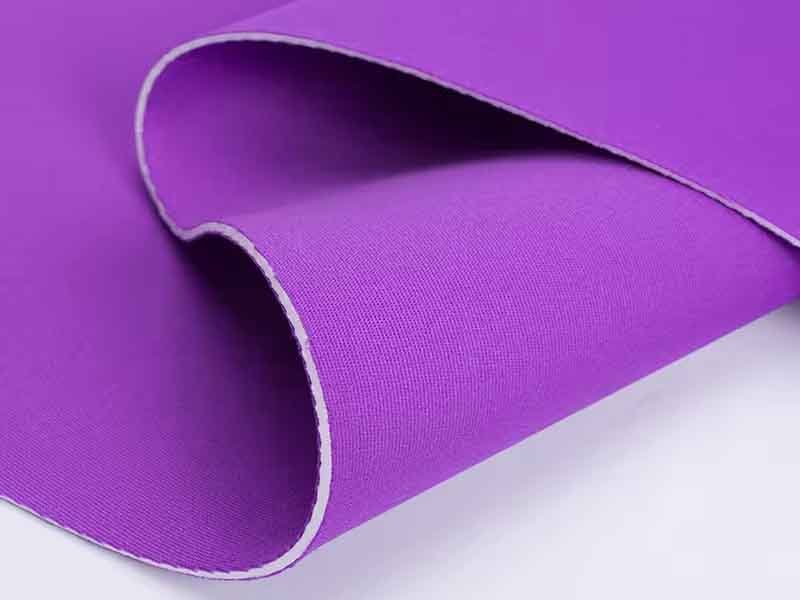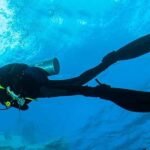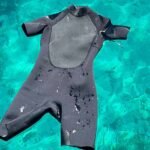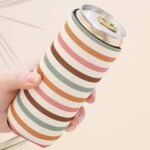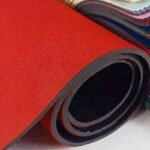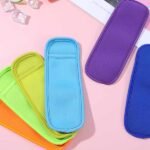The world of neoprene manufacturing has undergone a seismic shift in recent years. No longer confined to niche wetsuit suppliers, neoprene products—from stylish bags and cozy koozies to precision-engineered covers—have exploded onto global markets. Buyers today demand not only innovative designs and competitive pricing but also the agility of OEM (Original Equipment Manufacturer) and ODM (Original Design Manufacturer) partnerships that can turn ideas into reality at scale.
Global buyers are leveraging OEM and ODM neoprene partnerships to secure custom products with low minimum order quantities, quick lead times, and assured quality—enabling them to respond swiftly to market trends and consumer demands.
Beyond the numbers and factory tours lies a story of collaboration. Imagine a startup launching a neoprene travel bag with a viral TikTok influencer’s logo—designed, sampled, and shipped all within four weeks. That’s the power of a well-oiled OEM/ODM process. In this article, we’ll unpack the drivers of neoprene demand, map the hottest export regions, and guide you through selecting the right manufacturing partner—arming you with the insights to elevate your business.
What Are the Key Drivers Behind Rising Global Demand for Neoprene Products?
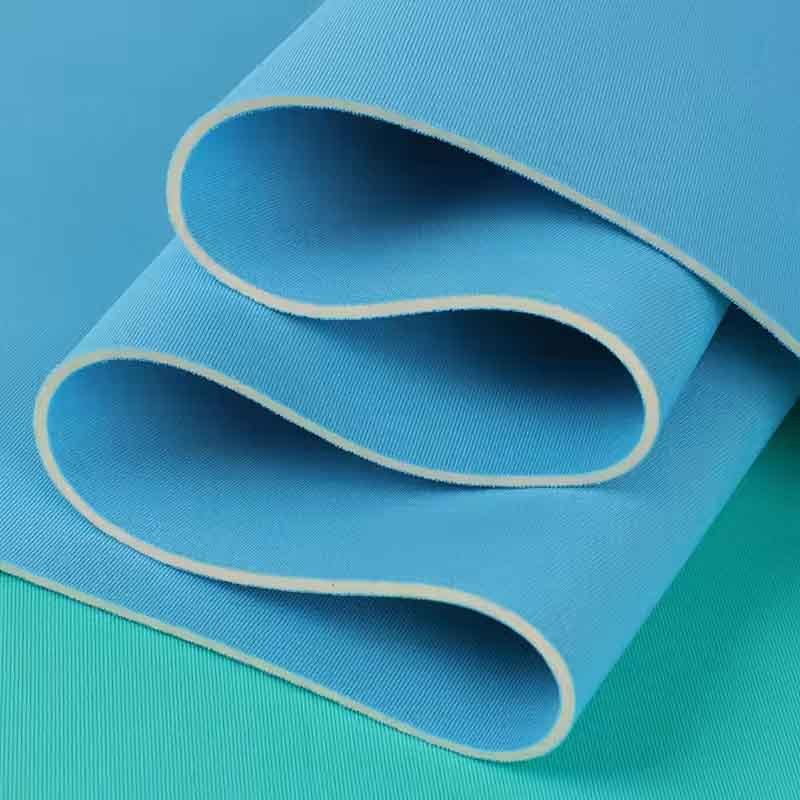
Neoprene’s unique combination of flexibility, durability, water resistance, and insulation makes it ideal for a wide range of products. Rising consumer interest in athleisure, eco-friendly materials, and personalized branding has driven demand. Additionally, OEM/ODM capabilities—such as low MOQs, rapid prototyping, and turnkey design services—have unlocked new markets worldwide.
Neoprene has transcended its origins in dive suits to become a versatile hero material in industries from fashion to electronics. Three primary factors fuel its ascent:
- Material Performance:
- Water Resistance & Insulation: Neoprene’s closed-cell structure repels water, making it perfect for drink koozies, protective covers, and wetsuits.
- Flexibility & Durability: Stretchable yet robust, neoprene withstands daily wear—ideal for bags, gloves, and cases.
- Thermal Stability: Maintains performance across temperature extremes, appealing to outdoor and industrial applications.
- Consumer Trends:
- Athleisure & Active Lifestyles: The global athleisure market is projected to grow at a CAGR of 8.1% through 2028, with neoprene-based accessories riding the wave.
- Customization & Branding: Brands leverage OEM/ODM to co-create limited-edition neoprene items, from mousepads to pet accessories, satisfying niche audiences.
- Sustainability Focus: Eco-conscious buyers seek dope-dyed and water-saving neoprene variants, driving innovation.
- Supply Chain Evolution:
- Low MOQ & Rapid Sampling: Modern factories offer MOQs as low as 50–100 units, paired with 7–10 day sample turnaround—crucial for small brands testing new products.
- One-Stop Services: R&D, tooling, production, packaging, and quality inspection under one roof reduce lead times and communication overhead.
- Global Logistics Partnerships: Streamlined export processes and FOB/CIF options simplify cross-border trade.
Critical Perspective:
While neoprene’s allure is undeniable, buyers must weigh material costs—often 15–30% higher than polyester blends—and environmental concerns tied to petrochemical origins. Engaging with manufacturers offering recycled or limestone-based neoprene can mitigate this.
Understanding these drivers equips global buyers to position neoprene products competitively—melding performance with compelling brand narratives.
Which Regions Represent the Fastest-Growing Markets for Neoprene Exports?
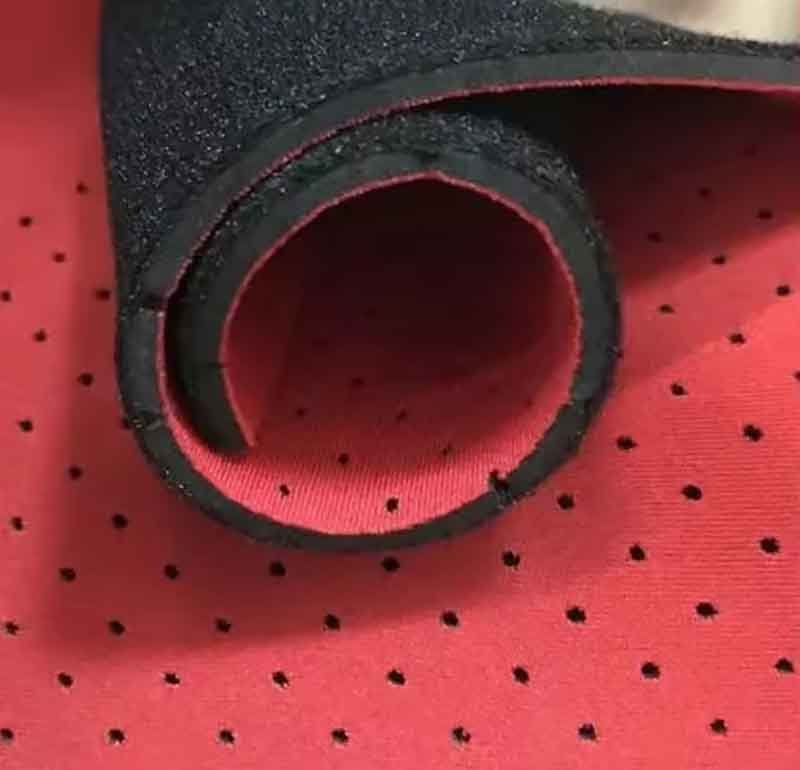
Europe (especially Germany and the UK), North America (the US and Canada), and Oceania (Australia and New Zealand) are leading in neoprene import growth, driven by strong sports, outdoor, and lifestyle sectors. Emerging markets in Southeast Asia and Latin America also show double-digit CAGR in neoprene accessories.
| Region | CAGR (2020–2024) | Key Applications |
|---|---|---|
| Europe | 9.5% | Wetsuits, bags, cases |
| North America | 8.8% | Sports gear, drink koozies |
| Oceania | 7.2% | Outdoor accessories |
| Southeast Asia | 11.3% | Fashion accessories |
| Latin America | 10.5% | Protective covers |
Evaluating markets by import volume and growth rates reveals strategic entry points:
- Europe:
- Germany & UK Leadership: Robust outdoor recreation cultures fuel demand for neoprene gear. German import volumes exceeded USD 150M in 2023, with a 9.5% CAGR since 2020.
- Regulatory Standards: CE certifications for safety and REACH compliance for chemical safety are mandatory—buyers must partner with compliant OEM/ODM factories.
- North America:
- US Market Maturity: The US import market reached USD 200M+ in 2023. Demand spans neoprene phone cases to insulated dog coats, underpinned by high consumer spending on premium accessories.
- Canada’s Niche Growth: Outdoor sports in Canada drive specialized neoprene products, from cycling pants to hydration pack covers.
- Oceania:
- Australia & New Zealand: Surf culture and outdoor lifestyles generate steady neoprene demand. Though smaller in absolute volume, Oceania’s CAGR of 7.2% indicates stability and willingness to pay for quality.
- Emerging Markets:
- Southeast Asia: Rapid urbanization and rising middle-class incomes create appetite for fashion-forward neoprene bags and tech accessories. Vietnam and Thailand lead with double-digit growth.
- Latin America: Protective equipment and promotional merchandise (koozies, laptop sleeves) see 10.5% CAGR, driven by corporate branding and outdoor events.
Supply Chain Implications:
Exporters must navigate region-specific tariffs—up to 6% on neoprene products in Latin America—and optimize Incoterms to balance cost and control. Building a flexible logistics network (air, sea, express) can reduce lead times from 30 to 15 days for priority shipments.
Selecting target regions involves balancing volume potential, regulatory complexity, and competitive landscape—empowering buyers to prioritize markets that align with their brand strategy.
How Do OEM and ODM Models Differ in Neoprene Manufacturing?

OEM focuses on manufacturing to buyer’s supplied designs and specifications, while ODM provides complete design-to-production services, offering proprietary molds and patterns. OEM suits established brands with in-house design teams; ODM benefits startups lacking design resources, seeking turnkey solutions.
Understanding these models is crucial for aligning capabilities with business goals:
- OEM (Original Equipment Manufacturer):
- Buyer-Led Design: Clients supply detailed CAD files, tech packs, or physical samples. The factory replicates and produces at scale.
- IP Ownership: Buyers retain full design IP, controlling product differentiation.
- Cost Structure: Lower upfront R&D costs; pricing based strictly on BOM (Bill of Materials) and labor.
- ODM (Original Design Manufacturer):
- Factory-Led Innovation: The manufacturer offers pre-developed designs, material options, and pattern library. Buyers choose or tweak existing models.
- Shared IP: Factories may retain design rights; buyers often license designs, reducing exclusivity but accelerating time-to-market.
- Turnkey Service: Includes concept development, prototyping, branding, packaging design, and compliance testing.
- Hybrid Approaches:
- Co-Development: Joint R&D teams refine designs, splitting costs and timelines. Ideal for complex neoprene applications (e.g., automotive seals).
- Flexible Agreements: OEM contracts with optional ODM add-ons (pattern customization, branding artwork) give buyers maximum agility.
- Decision Factors:
- Design Expertise: Do you have in-house designers? OEM may suffice. If not, ODM accelerates launch.
- Time-to-Market: ODM often delivers in 4–6 weeks from brief to production; OEM depends on buyer’s prototype readiness.
- Margin Considerations: OEM margins hinge on volume; ODM includes design fees but can command premium pricing for unique products.
Buyer’s Checklist:
- Clarify IP ownership clauses in contracts.
- Request portfolio of existing ODM designs and past OEM collaborations.
- Evaluate tooling capabilities: die-cutting, heat sealing, and lamination capacities impact final quality.
By choosing the right partnership model, global buyers can optimize costs, protect IP, and reduce lead times—ensuring a competitive edge in dynamic markets.
What Quality Standards, Certifications, and Testing Protocols Matter Most?

Key standards include ASTM D1056 for neoprene foam, ISO 9001 for quality management, and REACH/ROHS for chemical safety. Testing protocols cover tensile strength, compression set, aging, and hydrolysis resistance. Certifications like SGS, Intertek, and TÜV add credibility for export markets.
Quality assurance is non-negotiable in OEM/ODM partnerships. Buyers should verify:
- Material Specifications:
- ASTM D1056: Defines neoprene’s density, compression, and cell structure—critical for insulation and buoyancy applications.
- ASTM D412: Measures tensile strength and elongation at break, ensuring durability under stress.
- Manufacturing Standards:
- ISO 9001: Assesses factory’s quality management systems, traceability, and continuous improvement processes.
- ISO 14001: Environmental management certification indicates eco-friendly practices—a growing buyer priority.
- Chemical Compliance:
- REACH (EU): Restricts hazardous substances; mandates material safety data sheets (MSDS).
- ROHS: Limits heavy metals and flame retardants in end-products, especially for electronics-related neoprene cases.
- Testing Protocols:
- Aging Tests: Simulate thermal and UV exposure to predict long-term performance.
- Hydrolysis Resistance: Key for wet environments—ensures foam doesn’t degrade in water.
- Compression Set Testing: Measures foam’s ability to recover shape after sustained load.
- Third-Party Certification Bodies:
- SGS & Intertek: Offer pre-shipment inspections and chemical testing, providing export-ready documentation.
- TÜV Rheinland: Recognized for rigorous safety and performance testing.
| Test Type | Standard | Purpose |
|---|---|---|
| Tensile Strength | ASTM D412 | Durability under tension |
| Compression Set | ASTM D1056 | Resilience after compression |
| Aging (Heat/UV) | ISO 11507 | Long-term performance simulation |
| Hydrolysis Resistance | ASTM D543 | Stability in water environments |
Critical Insight:
Certifications alone don’t guarantee consistency. Buyers should conduct on-site audits or hire third-party inspectors to verify process controls, from raw material procurement to final packaging.
Aligning on standards and testing protocols reduces risk, protects brand reputation, and ensures seamless entry into regulated markets.
How Can Buyers Assess a Neoprene Factory’s Capabilities and Compliance?
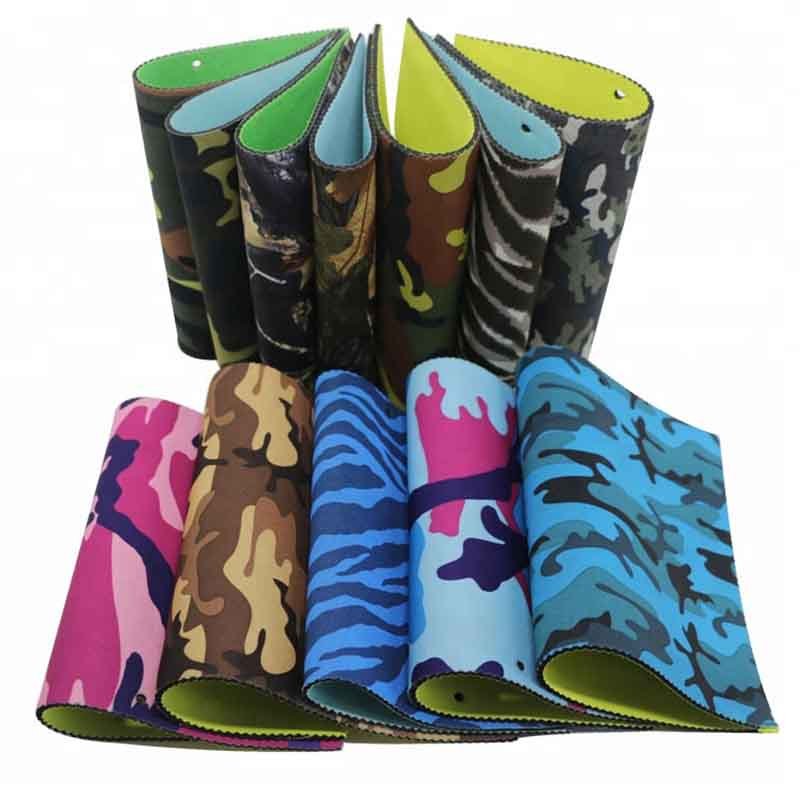
Buyers should evaluate factory certifications (ISO 9001/14001), conduct virtual or on-site audits, review sample quality, and check capacity for R&D, tooling, and bulk production (daily output). References, site videos, and third-party inspection reports further validate capabilities.
A thorough due-diligence process includes:
- Document Verification:
- Certifications: Confirm ISO, SGS, and environmental awards via registry databases.
- Business License & Export Records: Validate manufacturing scope and export history.
- Factory Audit (Virtual or On-Site):
- Production Layout: Inspect workflow from mixing neoprene compounds to lamination and finishing.
- Equipment Check: Ensure availability of advanced die-cutting presses, CNC molds, and automated lamination lines.
- Quality Control Stations: Look for dedicated QC areas with calibrated testing instruments.
- Sample & Pilot Runs:
- Prototype Review: Test physical samples for fit, finish, and performance.
- Pilot Batch: Order a small batch (50–100 units) to assess consistency and packaging quality.
- Capacity & Scalability:
- Daily Output Metrics: Leading neoprene factories produce 30,000+ pieces/day across multiple shifts.
- R&D Team Strength: A dedicated team of 10–20 engineers/designers ensures rapid iteration.
- Communication & Project Management:
- Assigned Account Manager: Central point of contact for design revisions, production updates, and logistics.
- ERP/PLM Systems: Real-time tracking of orders, material inventory, and quality issues.
Data Snapshot (Example Factory):
- Annual Revenue: USD 25M
- Factory Size: 50,000 m²
- Employees: 400+
- R&D Staff: 15
Buyer’s Tip:
Engage a third-party inspection service (Bureau Veritas, AsiaInspection) for unbiased reports on workmanship, material certification, and compliance with social responsibility standards.
By combining document checks, audits, and sample testing, buyers can confidently select a neoprene partner that meets quality, capacity, and compliance requirements.
What MOQ, Pricing Structures, and Lead Times Should Global Buyers Expect?
Typical MOQs range from 50–200 units per style. Pricing depends on material weight ($3–$10 per meter), complexity, and finishing. Lead times: 7–14 days for samples; 20–45 days for bulk orders. Volume discounts often apply above 1,000 units.
Understanding cost drivers and timelines helps buyers plan effectively:
- Minimum Order Quantities (MOQ):
- Low MOQ Options: 50–100 pieces for standard neoprene bags and koozies.
- Custom Molded Items: MOQs of 200–500 units due to tooling costs.
- Pricing Breakdown:
- Material Cost: Neoprene sheet prices range from $3 to $10 per linear meter, depending on density (1.2–2.0 mm thickness) and eco certifications.
- Labor & Assembly: Labor rates vary by region; Chinese factories often price at $1.50–$3 per unit for straightforward designs.
- Tooling & Artwork Fees: One-time fees of $200–$500 for custom die cuts or printed patterns.
| Order Volume | Price per Unit (USD) | Lead Time (Bulk) |
|---|---|---|
| 50–200 units | $5.50 – $8.00 | 20–30 days |
| 201–1,000 units | $4.50 – $6.50 | 25–35 days |
| >1,000 units | $3.50 – $5.00 | 30–45 days |
- Sample & Prototyping:
- Sample Cost: $50–$150 per piece, refundable upon bulk order.
- Sample Lead Time: 7–14 days, including custom printing or embossing.
- Volume Discounts & Payment Terms:
- Tiered Pricing: 5–15% discounts at predefined thresholds (500, 1,000, 5,000 units).
- Payment Terms: Commonly 30% deposit, 70% balance before shipment; negotiable for long-term partners.
- Lead Time Optimization:
- Pre-Production Meetings: Finalizing tech packs before production avoids delays.
- Concurrent Processes: Sample development and material sourcing conducted in parallel.
Critical Note:
Ultra-tight timelines (under 30 days) may incur 10–20% rush fees. Buyers balancing speed and cost should discuss phased deliveries or buffer stock strategies.
Clear expectations around MOQ, pricing, and timelines help buyers budget accurately and avoid surprises—laying the groundwork for successful long-term cooperation.
How Do Logistics, Shipping Regulations, and Tariffs Impact Export Operations?
Exporters navigate Incoterms (FOB, CIF), region-specific tariffs (0–6%), and customs clearance requirements (FDA for US, customs declaration for EU). Air freight delivers in 5–10 days; sea freight (LCL/FCL) takes 20–35 days. Proper documentation (CBM, HS codes) minimizes delays.
Navigating the export labyrinth is complex but manageable:
- Incoterms & Cost Allocation:
- FOB (Free on Board): Buyer arranges freight; lower factory responsibility.
- CIF (Cost, Insurance, Freight): Seller handles delivery to port and insurance, simplifying buyer logistics.
- Tariffs & Trade Agreements:
- EU Customs Duties: Neoprene bags (HS code 4202.92) attract 2.7% duty; protective covers (HS 3926.90) may be duty-free under GSP schemes.
- US Duties: Most neoprene imports face 0–3% duty, but antidumping measures on certain rubber sheets can add 5–10%.
- FTA Opportunities: ASEAN-China Free Trade Agreement reduces duties for Southeast Asia shipments.
- Shipping Modes:
- Sea Freight (LCL/FCL): Cost-effective for large volumes; door-to-port ~30 days transit.
- Air Freight: Faster (5–10 days) but 3–5× cost; ideal for urgent samples or small batches.
- Courier (DHL, FedEx): Door-to-door in 3–7 days, best for <100 kg shipments.
- Customs Documentation:
- HS Codes & CBM Calculation: Accurate CBM (cubic meter) and HS code ensure correct duties and prevent customs holds.
- Certificates of Origin: Preferential tariffs under FTAs require notarized COOs.
- Material Safety Data Sheet (MSDS): Mandatory for chemical-based neoprene products entering EU/US markets.
- Risk Mitigation:
- Insurance: Marine cargo insurance (CIF) protects against loss/damage.
- Freight Forwarder Partnerships: Experienced forwarders handle palletizing, customs clearance, and local delivery.
Buyers should factor in 10–20% of product cost for logistics and duties. Building a buffer stock near key markets (e.g., US west coast warehouses) can reduce lead times and per-unit shipping costs.
Mastering logistics and compliance transforms manufacturing partnerships into reliable global supply chains—crucial for delivering end-customer satisfaction.
Are Sustainable and Eco-Friendly Neoprene Solutions Becoming Mainstream?
Yes—buyers increasingly demand dope-dyed, limestone-based, and recycled neoprene to reduce water use and carbon footprint. Certified solutions (Oeko-Tex Standard 100, Global Recycled Standard) are gaining traction, especially in Europe and North America.
Sustainability isn’t just a buzzword; it’s a market imperative:
- Eco-Friendly Neoprene Types:
- Limestone-Based Neoprene: Uses calcium carbonate instead of petroleum; reduces CO₂ emissions by 50%.
- Recycled Neoprene: Incorporates post-industrial or post-consumer scrap, diverting waste from landfills.
- Dope-Dyed Foam: Pigments added during polymerization eliminate dye baths, saving up to 80% water.
- Certifications & Standards:
- Oeko-Tex Standard 100: Ensures textiles are free from harmful substances.
- Global Recycled Standard (GRS): Verifies recycled content and chain of custody.
- ISO 14067: Measures carbon footprint of products, aiding transparent reporting.
- Consumer & Regulatory Drivers:
- European Green Deal: Mandates eco-design and circular economy practices by 2030.
- North American Initiatives: California’s AB 1276 encourages recycled material use in consumer products.
- Brand Commitments: Companies like Patagonia and Adidas spotlight sustainable neoprene lines, influencing B2B demand.
- Cost & Performance Trade-Offs:
- Price Premiums: Sustainable neoprene commands 10–20% higher material costs, offset by brand value and marketing appeal.
- Performance Parity: Limestone-based neoprene matches conventional neoprene in water resistance but may vary in stretch. Rigorous testing ensures specs.
- Implementation Strategies:
- Blend Approaches: Mix virgin and recycled neoprene to balance cost and sustainability.
- Life-Cycle Assessments (LCA): Evaluate end-to-end environmental impact—from raw material extraction to product disposal.
- Take-Back Programs: Encourage end-users to return used neoprene for recycling, fostering circularity.
While sustainable variants offer environmental benefits, buyers must scrutinize supply chain transparency. “Greenwashing” risks abound—demand independent LCA reports and supply chain audits to verify eco-claims.
Embracing sustainable neoprene solutions not only meets regulatory and consumer expectations but also positions brands as responsible leaders—driving long-term value.
Conclusion
Neoprene’s journey from niche wetsuits to everyday essentials underscores its unmatched versatility. By leveraging OEM and ODM partnerships—anchored in rigorous quality standards, strategic logistics, and sustainable innovations—global buyers can launch differentiated products, scale efficiently, and captivate end-consumers. Ready to transform your neoprene vision into reality?
Contact Szoneier today for custom neoprene solutions.
Partner with Szoneier—where 18+ years of neoprene expertise meets your brand’s ambitions.

